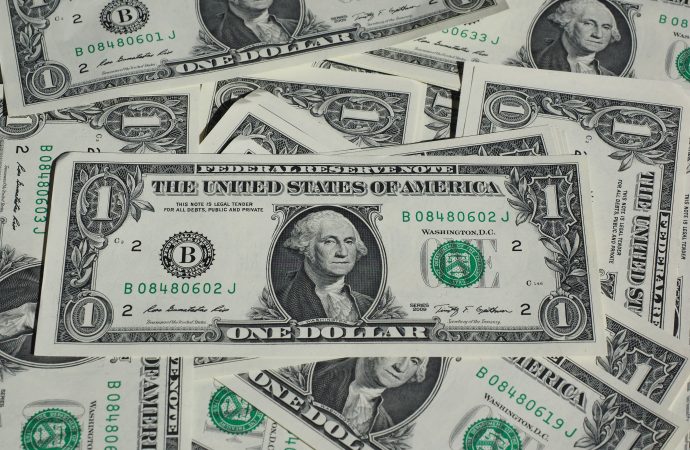As global economic uncertainties rise, Russia is facing the heat with its heavy reliance on euro and dollar sales. With sanctions from the West and a volatile oil market, it’s becoming increasingly important for Russia to consider reducing its exposure to these currencies. But is now the right time? In this blog post, we’ll explore
As global economic uncertainties rise, Russia is facing the heat with its heavy reliance on euro and dollar sales. With sanctions from the West and a volatile oil market, it’s becoming increasingly important for Russia to consider reducing its exposure to these currencies. But is now the right time? In this blog post, we’ll explore the potential benefits and risks of such a move and whether it’s time for Russia to pivot towards other currencies.
Russia’s current economic situation
Russia’s current economic situation is very challenging. The country is facing significant headwinds, including low oil prices, Western sanctions, and a weak ruble. These factors have led to a sharp slowdown in the Russian economy, and the country is now in recession.
In response to these challenges, the Russian government has been working to diversify its economy and reduce its dependence on oil and gas exports. One way it has been doing this is by increasing its sales of Eurobonds. Eurobonds are bonds that are issued in foreign currencies, typically the euro or the dollar.
By selling more Eurobonds, Russia can reduce its exposure to fluctuations in the value of the ruble. This is because when Russia sells Eurobonds, it receives foreign currency (euros or dollars) up front. Even if the value of the ruble falls later on, Russia will still have the foreign currency it received when it sold the bonds.
The Russian government has also been working to increase its reserves of foreign currencies, such as euros and dollars. This will help Russia weather any further declines in the value of the ruble and protect against any potential future shocks to the economy.
The benefits of reducing exposure to Euro and Dollar sales
When it comes to international trade, most countries deal in either Euros or U.S. Dollars. For Russia, this has been a problem. About two-thirds of its currency reserves are held in Euros and Dollars, which means that the country is highly exposed to the economic performance of these two currencies.
The Russian government has been trying to diversify its currency holdings, but so far it hasn’t had much success. Recently, there’s been talk of the country reducing its exposure to Euro and Dollar sales. This would be a good move for Russia for several reasons.
First, it would reduce the country’s dependence on the two currencies. Second, it would give Russia more control over its own economic destiny. And third, it could potentially lead to higher profits for Russian companies that export goods and services denominated in other currencies.
So far, no decisions have been made about whether or not to reduce Russia’s exposure to Euro and Dollar sales. But if the government does decide to take this route, it could be a very positive step for the Russian economy.
The risks of reducing exposure to Euro and Dollar sales
As the world economy continues to globalize, more and more countries are finding themselves exposed to international financial risks. One of these risks is the possibility of a sudden and sharp decline in the value of the US dollar or Euro. This can happen for a variety of reasons, including political instability, economic recession, or simply market volatility.
When this happens, it can have a serious impact on countries that rely heavily on exports to the US or Europe. For Russia, which sells a large amount of oil and gas to these markets, a drop in the value of the dollar or Euro could cause significant problems. In order to protect itself from this risk, Russia has been reducing its exposure to Euro and Dollar sales in recent years.
However, this strategy carries its own risks. Firstly, it may not be possible for Russia to completely decouple its economy from the US or European economies. Even if it could, there is no guarantee that other currencies will remain stable. Secondly, by reducing its exposure to Euro and Dollar sales, Russia may miss out on opportunities for growth in these markets. Finally, it is worth noting that the Russian Central Bank still holds a large number of US dollars and Euros in its reserves, so any further decline in their value would still have an impact on Russia’s economy.
What other countries are doing
The rouble has come under pressure in recent months as global oil prices have fallen, and there are concerns that Russia’s economy could be heading for a recession. One way to reduce the country’s exposure to economic troubles would be to reduce its reliance on sales of euros and dollars.
Other countries have taken similar steps in recent years. China, for example, has been diversifying its foreign exchange reserves away from the US dollar for several years. In 2016, it was reported that the Chinese central bank had increased its holdings of Japanese yen, while reducing its US dollar holdings.
Russia is not the only country that is looking at ways to reduce its exposure to the US dollar. Turkey has also been considering diversifying its reserves away from the American currency. In 2017, the Turkish central bank announced that it was planning to increase its holdings of gold.
It is not just emerging markets that are looking at ways to reduce their reliance on the US dollar. Switzerland, a developed economy, has also been examining options for diversifying its foreign exchange reserves. In 2018, it was reported that the Swiss National Bank was considering investing in Chinese renminbi-denominated assets.
Clearly, there is a growing trend among both developed and emerging economies of looking at alternatives to holding US dollars as part of their foreign exchange reserves. For Russia, reducing its exposure to the euro and dollar may help to insulate the country from some of the economic challenges it currently faces.
Russia’s options
Russia has a number of options when it comes to reducing its exposure to the euro and dollar. One option is to simply diversify its foreign currency reserves into other currencies. This could involve investing in currencies like the Canadian dollar, Swiss franc, or Chinese yuan. Another option is to increase its use of gold as a reserve asset. Russia could also work on developing its own domestic payment system that is not reliant on the dollar or euro. This could be done by working with China to create a joint payment system that would be used by both countries.
Conclusion
In conclusion, Russia’s current reliance on the Euro and Dollar for foreign currency sales comes with both advantages and disadvantages. As the global economy continues to evolve, it may be prudent for Russia to reduce its exposure to these currencies in order to diversify its revenue stream. That said, factors such as economic stability, cost of transaction fees, and geopolitical interests must also be taken into consideration when deciding whether or not to adjust its current approach. Ultimately, only time will tell if a shift away from the Euro and Dollar is in Russia’s best interest moving forward.





















Leave a Comment
Your email address will not be published. Required fields are marked with *